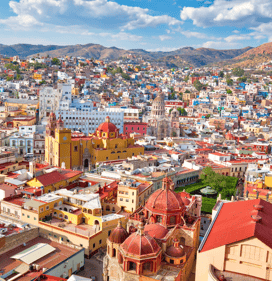Buying a House In Mexico — Home Construction
Whether you're a first-time homeowner or planning to construct your dream house, this comprehensive blog to home construction will provide you with the knowledge and insights you need.
9/6/20233 min read


This website is insider opinions, so please do your own research, too.
There are many reasons why you may want to hire us for you real estate agent team, and here are a few of them…
[Disclaimer: we are not builders — we know builders and can refer you to good ones, but here is opinions of non-professional builder experience!]
Building techniques are very different in Mexico. Whether buying or building, here are some considerations based on our experience renovating and building.
First lesson is: buyer beware! For issues such as:
expats are all considered wealthy and the cost of labor and materials can be the Mexican price or the expat price;
plumbing may lack traps meaning an odor emanates from drains. Water supply lines are usually 1/2" whereas 3/4" for main lines is better;
limited vents on plumbing systems means showers etc. drain slowly;
drains for sinks, showers and toilets are thin walled where as in Canda and the US, by law they are twice as thick being schedule 40 of PVC or ABS.
Electrical wiring is not what is the code in Canada and the US, eg receptacles may be cheap and pull apart, color of wire does not mean black is hot, white is neutral and green is ground; wiring is #12 and breakers 20 amp but small appliances and receptacles are only rated for 15 amps. The proper receptacle for a home with 20 amp breakers is the one with a "T". You may never see these in Mexico. Fifteen amp rated receptacles are the proper ones.
Wiring should be #14, breakers 15 amps and lots of circuits with ground fault receptacles in wet areas. Normally, electrical connections consist of twisted wires and electrical tape where as proper connectors called marrettes is what should be used.
Spend a little extra and purchase vinyl or aluminum windows and doors with proper screens. Double pane widows are rare and rather common are windows with glass held in with silicone. With proper windows and doors your house will have less dust and rain entering your home, require less heat or air conditioning and your home will be more comfortable.
Leaking roofs are not uncommon, and that may be true of new homes.
Sometimes mold may be found. The proper way to seal a nearly flat roof or a boveda roof is called "torch down" method. In this application a type of rubber is rolled out and applied with a torch to bond this membrane to your roof.
A common construction material is small red bricks manufactured with no standards and often containing manure. Beams made from concrete vs steel are used over large window / door openings. Re-bar in concrete is often too small to provide the required strength. Consider 10' ceilings vs 8'.
In many parts of Mexico nights are very cool and this can last for 3 months. Often homes are adjoining other homes meaning few windows to let in the heat from the sun. If your heat source is a fireplace or open flame propane heaters they lack efficiency and create a safety issue with carbon monoxide. Consider an efficient, vented, propane wall furnace such as those made by Rinnai and Empire.
If a major project or building whole home, rent or buy a cement mixer as you will obtain a more even and stronger mix vs workers mixing on the ground and you save workers' backs. Workers never wear hard hats, safety glasses or back braces, etc.
Please obtain a building permit!
When looking at existing homes do not be impressed by granite or marble but look beyond as those materials are relatively inexpensive. If you wish to tile an existing concrete floor very likely it requires levelling and therefor a jack hammer to "etch" existing concrete, creating a major mess. Concrete is not a good bonding agent for floor tiles. "Pega Piso" is the proper material. Be sure steel beams are used above patio doors and large window openings. It is more common to see a concrete beam with under sized rebar made in location and later cracks appear with the home's structural integrity seriously at risk.
Labor while much cheaper than one pays outside of Mexico is not as cheap as it appears as they lack "productivity" tools and often do everything by hand including mixing concrete. And, due to amazing weather a smaller house will suffice. A very nice home may be built for $50 to $60 a sq foot plus land.
These issues are common even in more expensive homes. There are no apprenticeships, no formal training and no standards. Note: 93% of Mexican municipalities have no construction regulations.
Architects and engineers should both be retained when designing and building. To prove their credentials ask for their cedula number which is a designation for all professionals including doctors, lawyers, notario's [uber-lawyers], etc.
